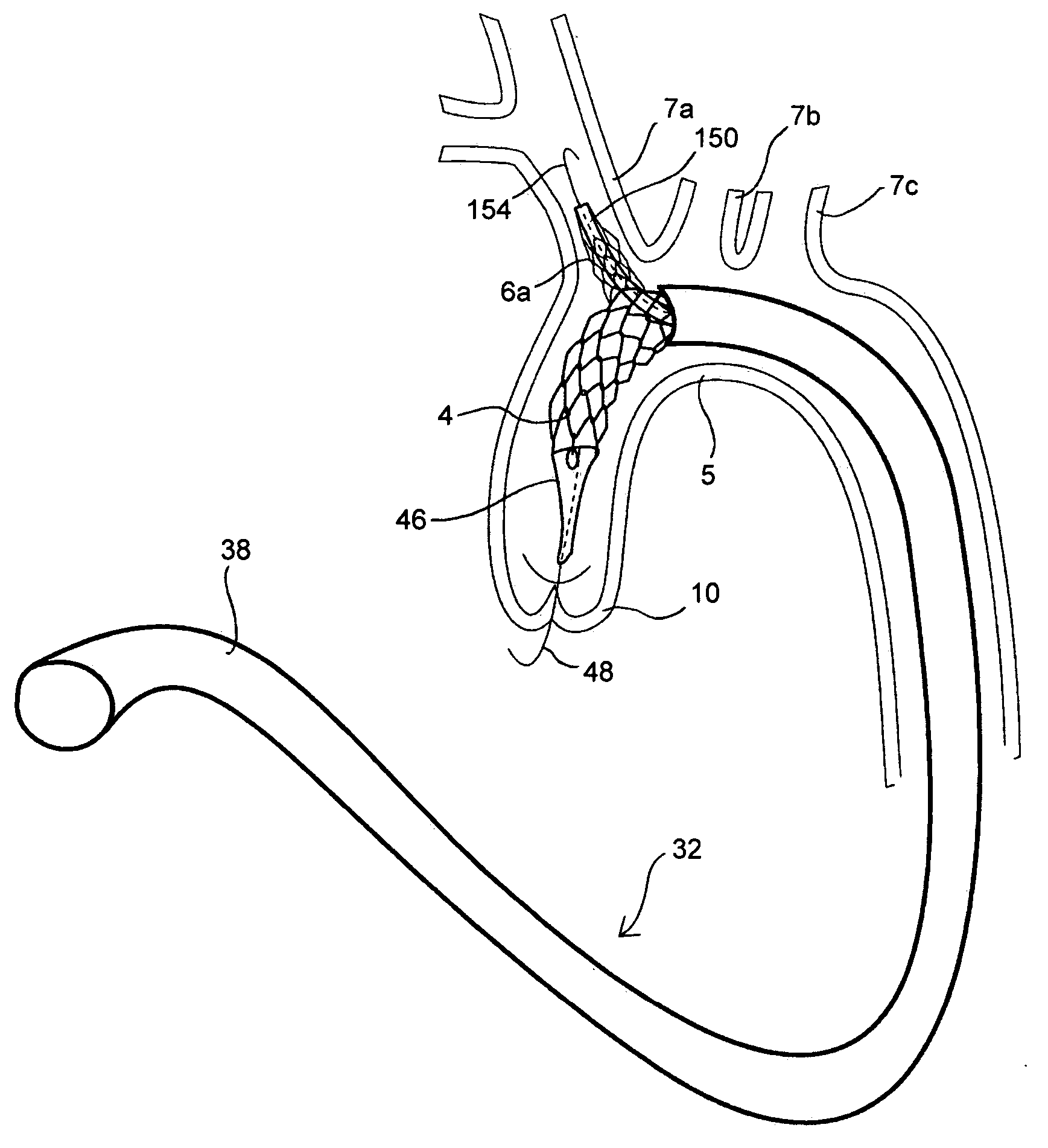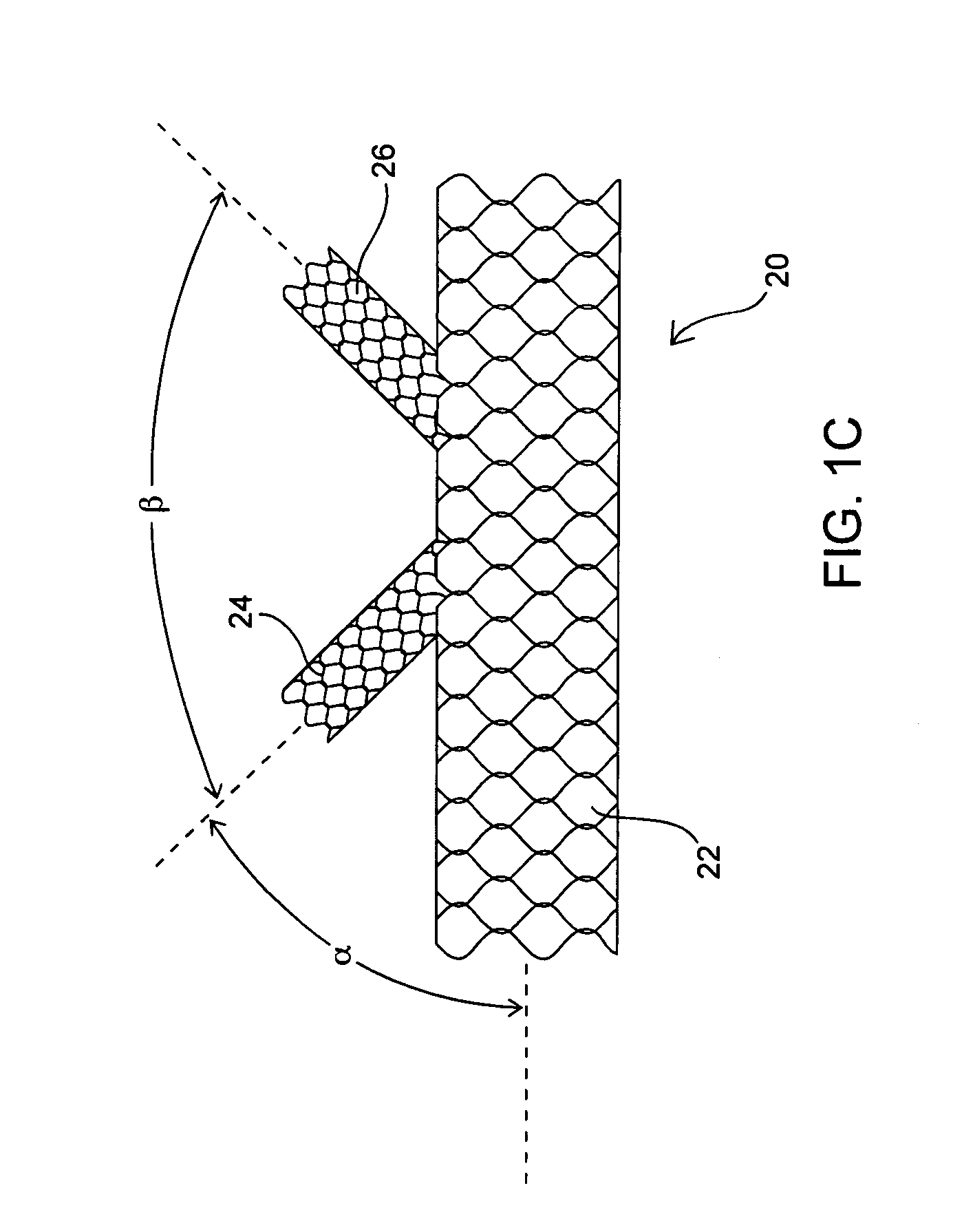Methods for placing a stent in a branched vessel
a branching vessel and stent technology, applied in the field of branching vessel stent placement, can solve the problems of cumbersome and difficult to employ and execute techniques, less adaptability of systems for implantation into smaller vessels, and difficulty in aligning and interconnecting legs with the body lumen with enough precision to avoid leakag
- Summary
- Abstract
- Description
- Claims
- Application Information
AI Technical Summary
Benefits of technology
Problems solved by technology
Method used
Image
Examples
Embodiment Construction
[0054] Before the devices, systems and methods of the present invention are described, it is to be understood that this invention is not limited to particular therapeutic applications and implant sites described, as such may vary. It is also to be understood that the terminology used herein is for the purpose of describing particular embodiments only, and is not intended to be limiting, since the scope of the present invention will be limited only by the appended claims.
[0055] Unless defined otherwise, all technical and scientific terms used herein have the same meaning as commonly understood by one of ordinary skill in the art to which this invention belongs. The terms “proximal” and “distal” when used to refer to the delivery and deployment systems of the present invention are to be understood to indicate positions or locations relative to the user where proximal refers to a position or location closer to the user and distal refers to a position or location farther away from the ...
PUM
 Login to View More
Login to View More Abstract
Description
Claims
Application Information
 Login to View More
Login to View More - R&D
- Intellectual Property
- Life Sciences
- Materials
- Tech Scout
- Unparalleled Data Quality
- Higher Quality Content
- 60% Fewer Hallucinations
Browse by: Latest US Patents, China's latest patents, Technical Efficacy Thesaurus, Application Domain, Technology Topic, Popular Technical Reports.
© 2025 PatSnap. All rights reserved.Legal|Privacy policy|Modern Slavery Act Transparency Statement|Sitemap|About US| Contact US: help@patsnap.com



